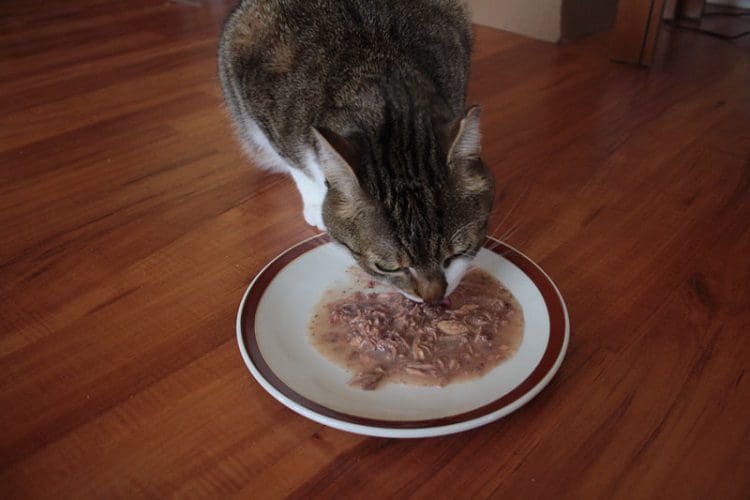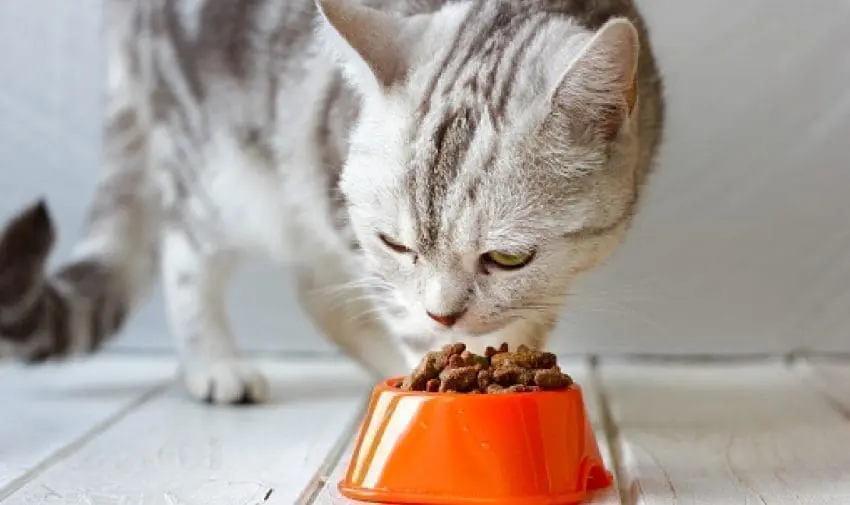Last Updated: 2 years ago
As pet parents, it’s important to understand the importance of a proper diet for cats and the guidelines for daily feeding amounts of cat food.
How much to feed a cat per day?
With the right knowledge, you can ensure your cat is getting the nutrition it needs while also managing its weight with its diet.
Let’s take a look at how much cat food per day you should be feeding your fur baby.
How Much To Feed A Cat Per Day?

Are you one of the many cat owners who is wondering how much cat food you should feed your kitty per day?
It’s important to make sure that your cat gets the right amount of nutrition in order to stay healthy and happy.
Here are some tips on portioning your cat’s food per day:
1. Determine Your Cat’s Age
The first step in determining how much food to give your cat is figuring out their age.
Kittens need more calories than adult cats, so it’s important to adjust the portion size accordingly.
Kittens up to six months old should have three meals per day (with appropriate kitten food), while adult cats can get away with two meals per day.
2. Consider Your Cat’s Weight
Next, consider your cat’s weight when deciding how much food it should eat each day.
If they are overweight or obese, then reduce their daily caloric intake by 25%.
On the other hand, if they are underweight or skinny, then increase their daily caloric intake by 25%.
3. Choose Quality Food

When selecting a type of food for your feline companion, always opt for high-quality brands that contain natural ingredients and no artificial preservatives or flavors.
This will ensure that all of their nutritional needs are met without having any adverse effects on their health down the line due to consuming low-grade cat foods with poor ingredient lists.
4. Measure Out Portions
Once you’ve determined what type of food is best for them, measure out portions according to package instructions.
Make sure not to overfeed, as this could lead to obesity, which can cause serious health problems such as diabetes and heart disease.
5. Monitor Eating Habits
Lastly, keep an eye on eating habits throughout the week and adjust portions accordingly if necessary.
For example, if one meal isn’t eaten completely within 20 minutes after being served, reduce portion sizes at future mealtimes until appetite returns to normal levels again.
By following these steps, you can ensure that you’re providing adequate nutrition for your beloved kitty!
Remember: every pet has different dietary needs, so it’s important to consult with a veterinarian before making any drastic changes in diet or lifestyle habits. Their feeding recommendations are valuable!
The Importance of a Proper Diet for Cats

As cat owners, we all want our furry friends to be happy and healthy. To make sure they stay that way, it’s important to provide them with a balanced diet that meets their nutritional needs.
Cats are obligate carnivores, meaning they require animal proteins for proper nutrition. Without enough protein in their diets, cats can suffer from malnutrition or other health issues like obesity or diabetes.
When choosing food for your cat, look for high-quality products made with real meat as the first ingredient listed on the label.
Avoid fillers such as corn and wheat gluten, which offer little nutritional value and may cause digestive problems in some cats.
You should also consider supplementing your cat’s diet with vitamins and minerals like taurine to ensure optimal health throughout its life cycle.
Cats need more than just protein; they also need fat in their diets to help maintain energy levels and promote a healthy coat of fur.
Fats are essential fatty acids found in fish oil or flaxseed oil, which can be added directly to wet food or mixed into dry kibble depending on your pet’s preference.
Additionally, water is an important part of any feline diet, so make sure you always have fresh water available at all times!
The amount of food you feed your cat will depend on its age, activity level, breed size, and overall health condition, but generally speaking, most adult cats require about 20 calories per pound of body weight each day, divided between two meals (one morning meal and one evening meal).
Kittens tend to eat more often due to their smaller stomachs. So keep this in mind when planning out cat feeding schedules for younger kittens!
Overall, providing a balanced diet full of quality proteins, fats, vitamins, and minerals is key to keeping your beloved companion healthy.
What If My Cat Is Eating Too Much!

Do you have a cat that seems to be eating too much?
If so, you’re not alone. Many cats are prone to overeating and can quickly become overweight if their food intake isn’t monitored closely.
Luckily, there are some simple steps you can take to help your cat regulate their weight and stay healthy.
Make sure your cat is getting enough exercise by providing them with toys and opportunities for playtime. This will help keep them active and burn off any extra calories they may be consuming through their diet.
Monitor the amount of food they’re eating each day. Talk to your vet about how much they should be consuming in order to maintain a healthy weight.
If necessary, consider switching to a diet food that is lower in calories or adding supplements like fish oil or probiotics to their meals. These can help promote healthier digestion while still providing essential nutrients for cats.
Remember that it’s important not only for your pet’s health but also for yours. An overweight cat is more likely to suffer from health problems such as diabetes or joint pain, which could lead to expensive medical bills down the line.
Conclusion
It is important to understand how much cat food your pet should be eating per day in order to ensure that they are receiving proper nutrition and staying at a healthy weight.
A good rule of thumb is to follow the guidelines for daily feeding recommendations as outlined by your veterinarian or cat food manufacturer.
You can use tips such as portion control and monitoring their weight regularly to help manage their diet.
With these tools, you can provide your furry friend with all the nourishment they need while avoiding overfeeding them.
References:
